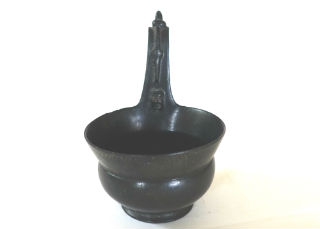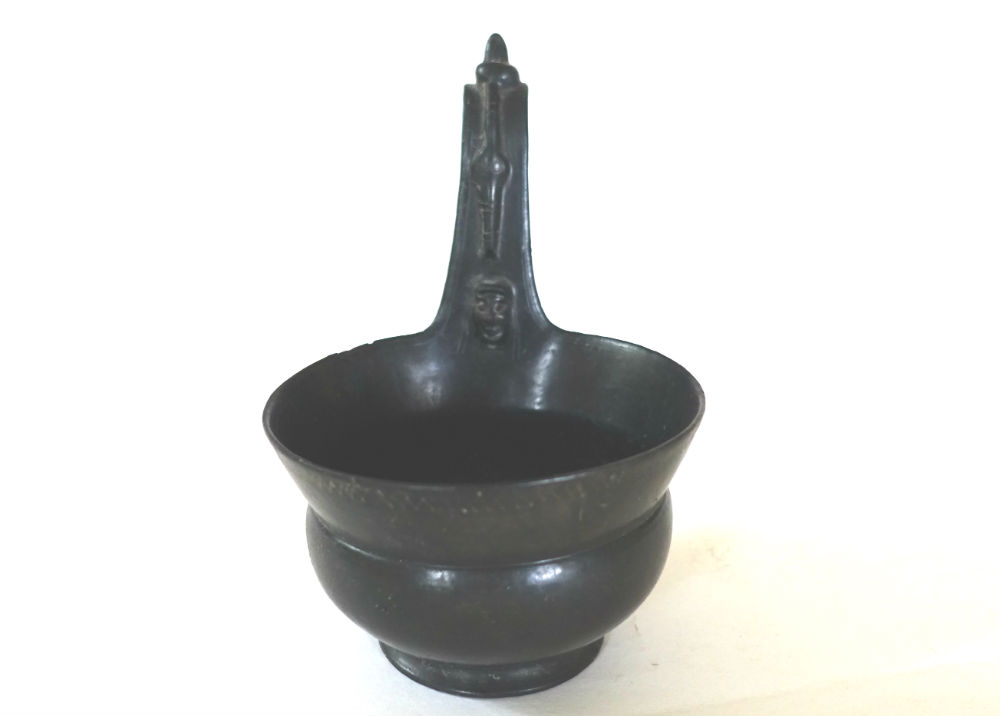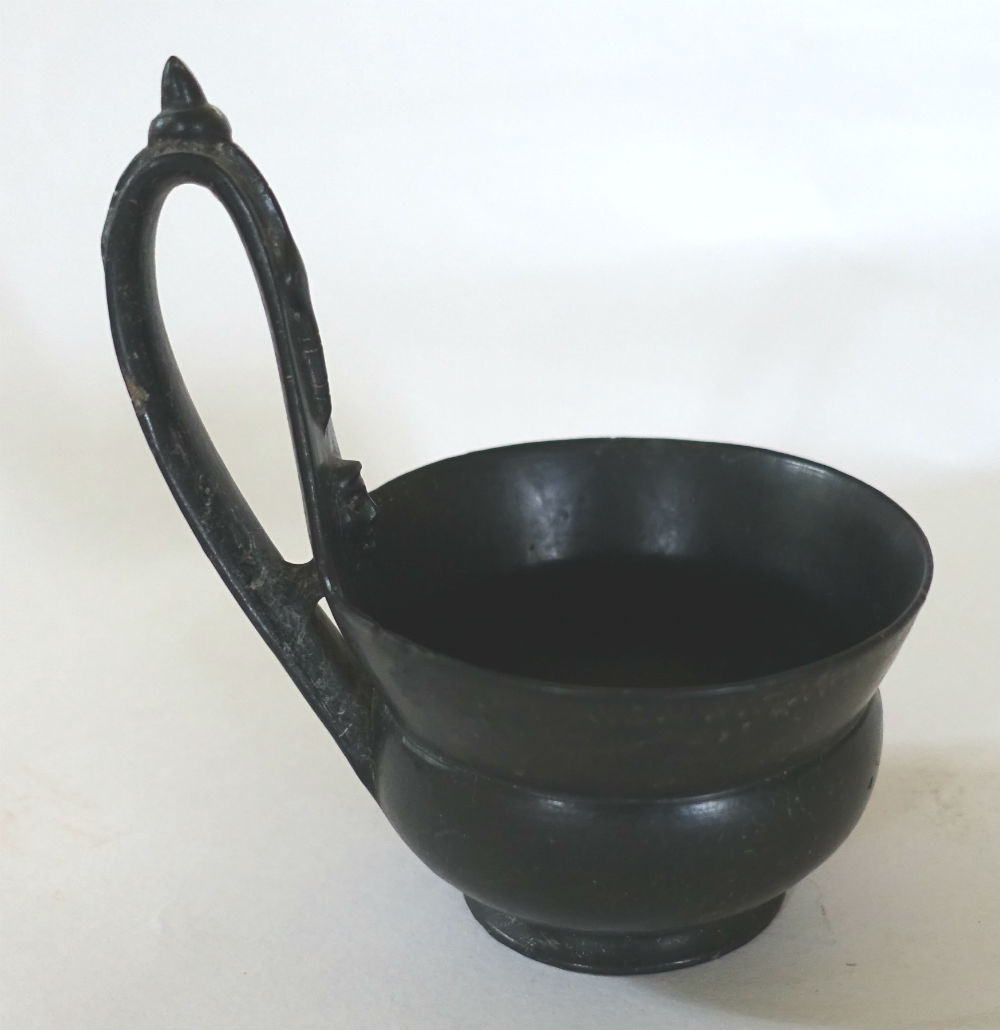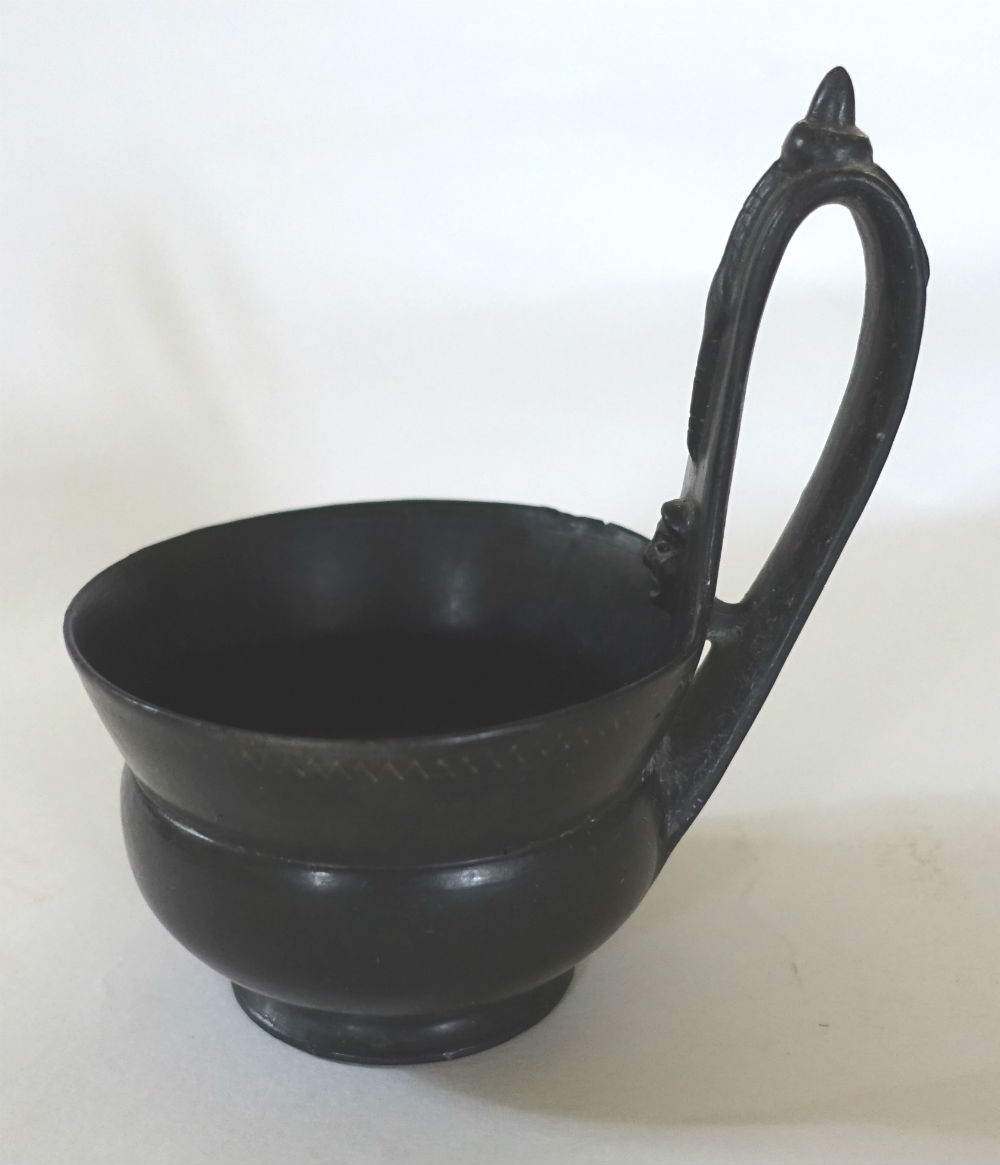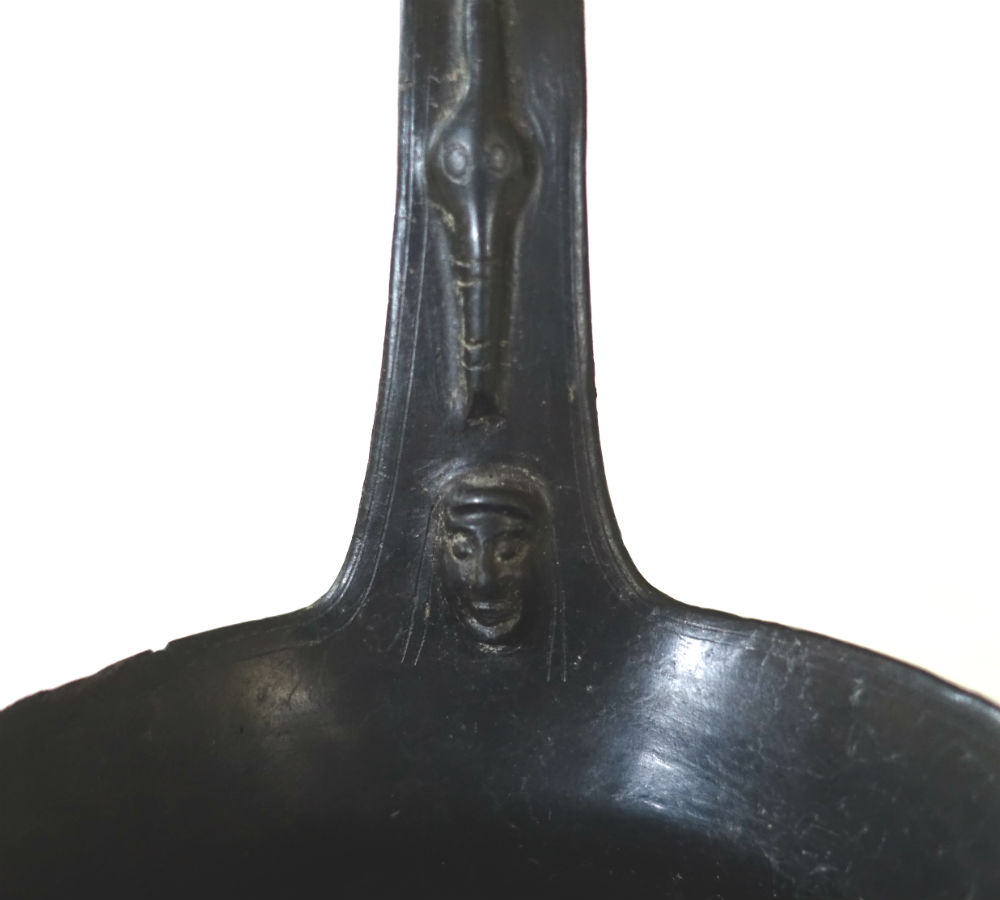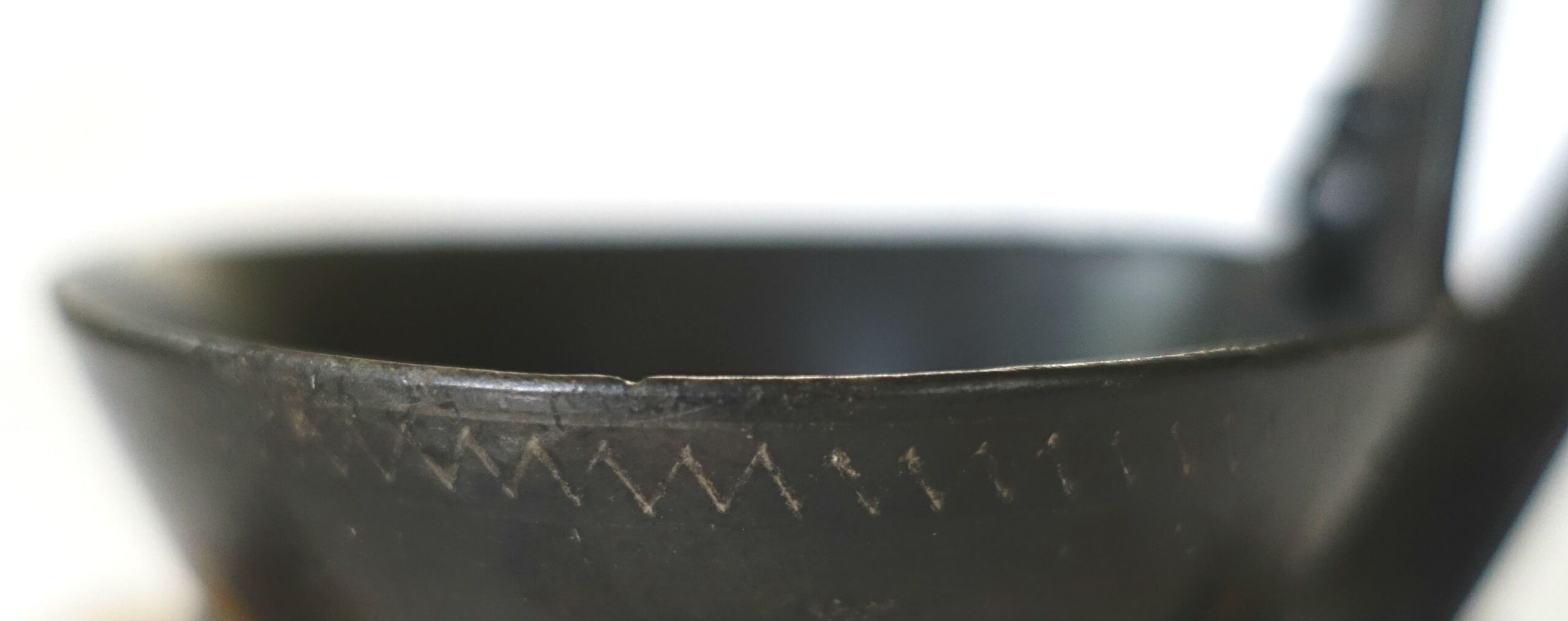Description
Kyathos with low foot
Etruria 550–525 B.C.
Height: 14 cms
Condition: Complete with a small repaired chip to the rim.
The Met Museum has an identical kyathos and this is their description:
The deep bowl of this kyathos has a slightly out-curving lip and is supported on small, low foot. A thin strap handle has a strut at the rim level and is decorated with a boss at the apex. Emanating from the boss are two swan-heads in low relief; the head on the exterior is attenuated and perhaps represents a plant rather than a bird. Three incised horizontal lines appear above and below the inner head, and its eyes are incised circles. At inner base of the handle is a finely modelled human head. A lightly incised zigzag appears on the exterior of the lip just above a deep horizontal groove that marks the change of the curve from lip to bowl. This form of “bucchero pesante” (heavy bucchero) kyathos was produced in Vulci .
Athenian potters drew inspiration from Etruscan ladles made of bucchero, a black ceramic burnished to a metallic sheen. Such a ladle was the model for the figured Greek version of the shape, which was exported from Athens mainly to the site of Vulci in large numbers. Artistic influences went both ways: Etruscan potters soon began to copy figured kyathoi, updating their traditional vessels in response to the popularity of the decorated imports.
